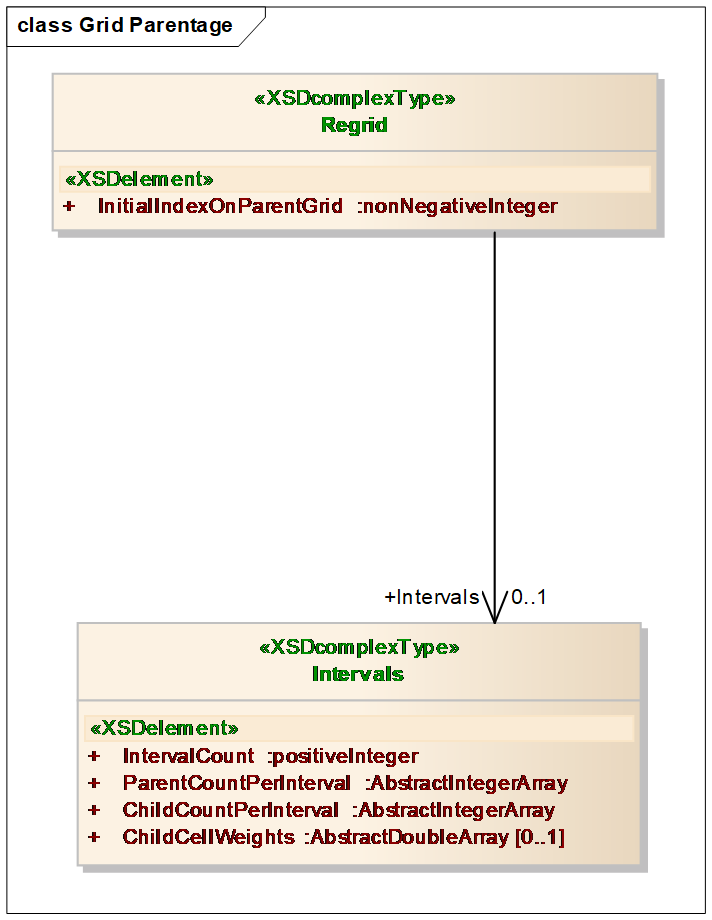11.8.2 Parentage and Re-Gridding
| Topic Version | 1 | Published | 09/11/2015 | |
| For Standard | RESQML v2.0.1 | |||
A child grid is related to a parent grid by a parentage construction. The parentage construction consists of a parent window, which is a collection of parent grid cells, with potentially a re-gridding description between the parent and child grid. Re-gridding is a one dimensional operation in which the number and size of cells may be changed between the parent and child grids (Figure 11.8.2-1).

The regrid description is performed within intervals. The parent and child grids share cell faces at the interval boundaries, which allows the specification of implicit geometric or property relationships between the two grids. Within each interval, the number of parent and child grid cells is each specified. Here are some recommendations for most cases:
- For grid refinement, the number of parent cells in each interval is 1, and the number of child cells varies. Stated another way: so that a child cell does not span 2 (or more) parent cells, writers should set the parent count per interval to 1.
- For grid coarsening, it is the opposite, with the number of parent cells varying while there is only one child cell in each interval.
Regrid is not restricted to simple refinement or coarsening but instead supports mapping an arbitrary number of parent cells to an arbitrary number of child grids within each interval. By default, the child cells are of equal size within an interval. If uneven child cell sizes are required, they may be specified using the weights, which are proportional to the child grid cell sizes within each interval.